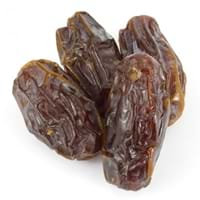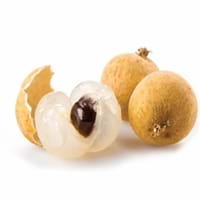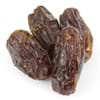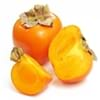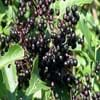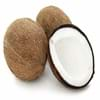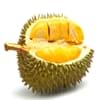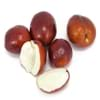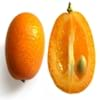Health Benefits
Cancer prevention, Cures gastro-intestinal troubles, Diarrhea treatment, Heart care, Heat stroke treatment, Improves muscular strength, Prevents constipation, Prevents nerve damage, Strengthening of bones
Anti depressant, Anti-inflammatory properties, Healthy mucus membrane, prevents oral cavity cancer, Prevents anemia, Prevents cases of morning sickness, Prevents lung cancer, Skin rejuvenation, Treatment of colonic diseases
General Benefits
Boosts immune system, Maintains healthy cholesterol level, Strengthens bones
Anti oxidant properties, Anti-inflammatory properties, Digestive aid, Gives you energy, Suppresses Arthritis
Skin Benefits
Anti-aging benefits, Brightens and lightens complexion, Reduces wrinkles, Treatment of skin diseases
Reduces wrinkles, Skin rejuvenation
Hair Benefits
Prevents hair loss, Promotes longer and healthier hair, Protects hair, Regulates hair growth
Not Available
Allergy Symptoms
Redness of eyes, Runny nose, Sneezing, Watery eyes
Itching, Swelling of mouth, tongue or lips, Tingling sensation in mouth
Side Effects
Allergic reaction, Diarrhoea, Intestinal gas, Stomach pain, Tooth decay, Weight gain
Mouth irritation, Weight gain
Best Time to Eat
Any time except an hour after meal, Don't consume at night and before bed
As a snack in the late afternoon
Vitamin B5 (Pantothenic Acid)
Vitamin C (Ascorbic Acid)
Vitamin E (Tocopherole)
Not Available
Vitamin K (Phyllochinone)
Not Available
Lutein+Zeaxanthin
Not Available
Calories in Fresh Fruit with Peel
Calories in Fresh Fruit without Peel
Not Available
Not Available
Calories in Frozen Form
Not Available
Not Available
Calories in Dried Form
Not Available
Calories in Canned Form
Not Available
Not Available
Calories in Jam
Not Available
Type
Tropical
Tree fruit, Tropical
Season
Spring, Summer
Mid to late summer
Varieties
Barhi, Dayri, Deglet Noor, Halawy, Khadrawy, Medjool, Thoory and Zahidi
Chompoo Longan, Kohala Seedling, Haew, Edau and Biew Kiew
Seedless Variety
No
Not Available
Color
Black, Brown, Red, Yellow
Rusty brown
Inside Color
Brown
Yellowish brown
Soil Type
Clay, Loam, Sand
Well-drained
Climatic Conditions
Hot, Warm
Sunny, Warm, Without frosts
Facts about
- Date is known as the tree of life in Middle east.
- Date palms cover 3% of the earth's total farmlands.
- Scholars believe that date (and not apple) was the real fruit mentioned in the Bible's Garden of Eden.
- Longan is also called as "Dragon's eye" in China as it gives an impression of an eyeball.
- Longan seeds can be used to absorb the venom after the snake bite and they also help to stop bleeding.
Spirits
Not Available
Yes
Cocktails
Not Available
Yes
Top Producer
Egypt
Thailand
Other Countries
Algeria, Iraq, Oman, Pakistan, South Africa, United Arab Emirates
Australia, Combodia, Taiwan, United States of America, Vietnam
Top Exporter
United Arab Emirates
Thailand
Botanical Name
Phoenix Dactylifera
Dimocarpus longan
Synonym
Not Available
Dragon eye
Subkingdom
Tracheobionta
Viridiplantae
Division
Magnoliophyta
Tracheophyta
Class
Liliopsida
Magnoliopsida
Subclass
Arecidae
Rosidae
Order
Arecales
Sapindales
Family
Arecaceae
Sapindaceae
Species
P. dactylifera
D. longan
Generic Group
Palm
Not Available
Difference Between Date and Longan
We might think that Date and Longan are similar with respect to nutritional value and health benefits. But the nutrient content of both fruits is different. Date and Longan Facts such as their taste, shape, color, and size are also distinct. The difference between Date and Longan is explained here.
The amount of calories in 100 gm of fresh Date and Longan with peel is 282.00 kcal and 83.00 kcal and the amount of calories without peel is Not Available and Not Available respectively. Thus, Date and Longan belong to High Calorie Fruits and Low Calorie Fruits category.These fruits might or might not differ with respect to their scientific classification. The order of Date and Longan is Arecales and Sapindales respectively. Date belongs to Arecaceae family and Longan belongs to Sapindaceae family. Date belongs to Phoenix genus of P. dactylifera species and Longan belongs to Dimocarpus genus of D. longan species. Beings plants, both fruits belong to Plantae Kingdom.
